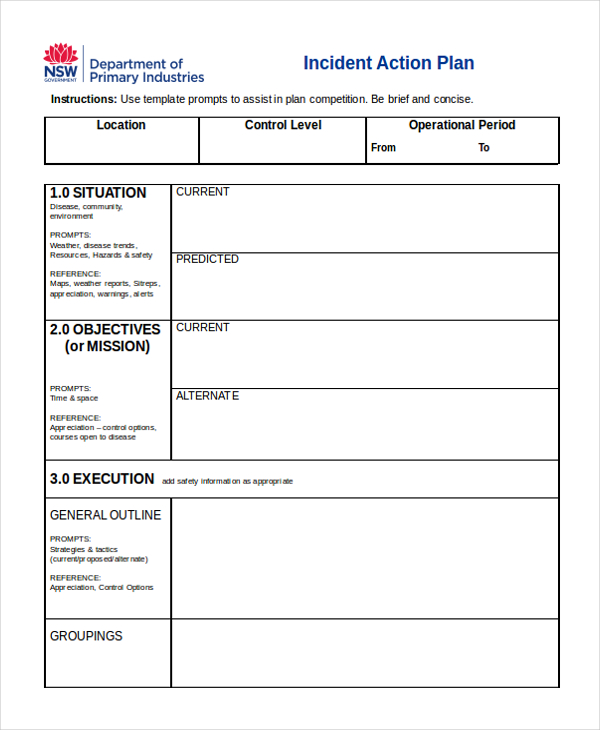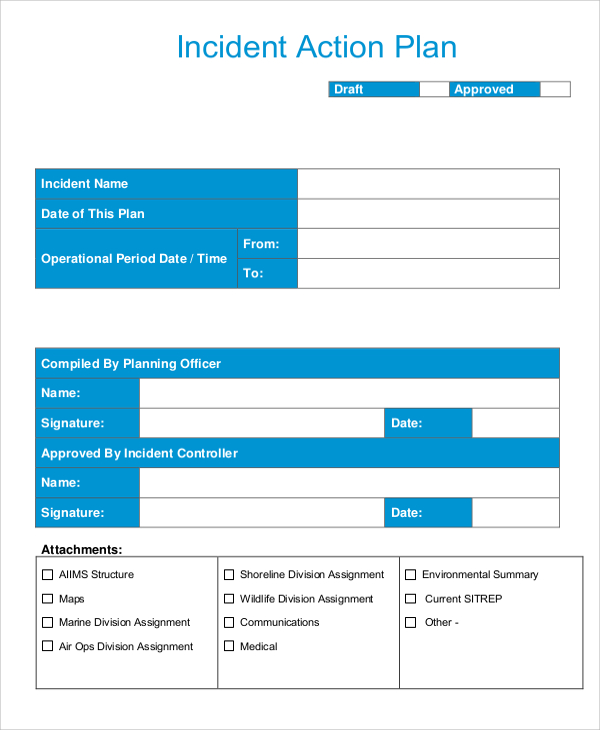

Organizational Functions: Major functions and functional units with incident management responsibilities are named and They remain standard and consistent. This common terminology covers the following: The Incident Command System (ICS) establishes Common Terminology that allows diverse incident management and support organizations to work together across a wide variety of emergency functions and hazard scenarios. Workbooks contain lesson introductions, a practice and application area, and lesson progress checks to measure students' learning.The Incident Command System (ICS) is based on the following 14 proven NIMS management characteristics, each of which contributes to the strength and efficiency of the overall system: Common Terminology #To be effective the incident action plan free#
To learn more about our interactive online courseware, visit our dss + eLearning homepage or schedule a free online demonstration. Be sure to periodically track the progress of your recommendations and prior to final closure of a recommendation, determine and verify that the action is completed and fully addressed the original intent of the recommendation. Keep in mind that some recommendations may look good on paper, but are not that realistic to put into place. The goal of follow-up is to prevent a recurrence of the incident.Įnsure recommendations receive prompt attention by creating an action plan. The final step of incident investigation is to follow up on your recommendations for corrective or preventive actions to be sure they were implemented and are effective.
 Second is a widely-distributed flyer to communicate contributing factors of the incident and chief lessons learned from the incident.
Second is a widely-distributed flyer to communicate contributing factors of the incident and chief lessons learned from the incident. 

First, there is an official incident investigation report with a limited distribution. When it comes to incident investigation, there are two levels of formal communication: Any recommendations or improvement suggestions that are not associated with the incident facts or situation should not be included in your final report.Ĭommunicating the information you have gathered, the lessons you have learned, and your recommended solutions will go a long way toward preventing incidents from happening again. Step 7: Document and Communicate FindingsĬlearly define what the expected results are from a particular recommendation and set priorities for each action, identifying which ones should be completed before operations resume. Corrective actions are intended to fix a hazard while preventive actions prevent a hazard from occurring. Recommendations exist as either corrective actions or preventive actions. Step 6: Recommend Corrective and Preventive ActionsĪt least one recommendation for each key factor should be identified, in some cases, a broad recommendation may address multiple key factors. The final three steps are imperative to preventing any further incidents. The purpose of an incident investigation is to protect precious lives and take steps to prevent an incident from happening again. Safety Attitudes / Pro-Active Safety Training.








 0 kommentar(er)
0 kommentar(er)
